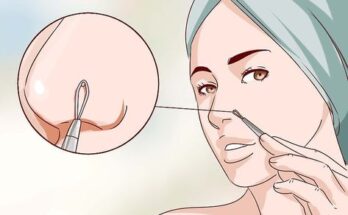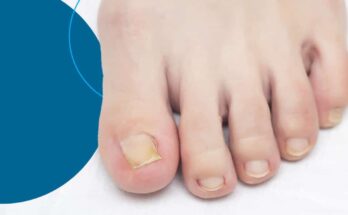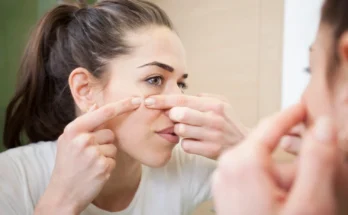Pimple popping and skin extractions are common topics of fascination, especially when it comes to stubborn skin conditions like cystic acne, blackheads, whiteheads, and milia. For many, it’s tempting to take matters into their own hands, but it’s important to understand the proper techniques and the potential risks involved. While it can be satisfying to watch videos of blackhead and pimple removal, doing it improperly can lead to scarring, infections, or even worsen the condition. In this article, we’ll explore how to safely manage these skin issues and distinguish between effective and harmful practices for a clearer complexion.
Understanding the Different Types of Pimples and Blemishes
Before diving into the extraction process, it’s important to understand the different types of blemishes you’re dealing with. Here’s a breakdown:
- Cystic Acne: Cystic acne is a severe form of acne where cysts form deep under the skin. These can be painful, inflamed, and filled with pus. They are typically larger than regular pimples and are often not suitable for at-home extractions due to the risk of scarring and infection.
- Blackheads: Blackheads are clogged pores that remain open at the surface. They appear dark because of oxidation, not dirt, as many people mistakenly believe. They are relatively easy to remove but require care to avoid irritation.
- Whiteheads: Whiteheads are clogged pores that stay closed. They appear as small, flesh-colored bumps and can become inflamed over time. Whitehead removal should be done gently to avoid rupture and further irritation.
- Milia: Milia are tiny, white, hard bumps that form when keratin (a protein found in skin) becomes trapped beneath the surface. These often appear around the eyes or on the cheeks. Milia require special attention since they don’t respond to typical acne treatments.
The Risks of Improper Extraction
While extracting pimples might seem satisfying, doing so incorrectly can cause more harm than good. Here are the potential risks:
- Scarring: Squeezing or popping pimples can lead to permanent scars, especially if done aggressively.
- Infection: Popping pimples with dirty hands or tools can introduce bacteria into the skin, leading to further breakouts or even infection.
- Worsening the Condition: Pushing on the skin can sometimes push bacteria deeper, leading to more severe inflammation and cystic acne formation.
- Hyperpigmentation: When you damage the skin by squeezing too hard or improperly, it can lead to dark spots (post-inflammatory hyperpigmentation) that can take months to fade.
Best Practices for Safe Pimple Popping and Extraction
If you’re determined to try at-home extractions, it’s essential to follow these best practices to minimize risks:
- Cleanse the Skin Thoroughly: Start with a gentle facial cleanser to remove oil, dirt, and makeup from your skin. Cleanse your hands as well with soap and water before touching your face.
- Steam Your Face: Steaming your skin helps open pores, making extractions easier and less painful. You can use a warm, damp towel over your face for 5–10 minutes or opt for a facial steamer.
- Use the Right Tools: Always use sanitized, sterilized tools designed for extractions, such as a comedone extractor. Avoid using your nails, as they can break the skin and introduce bacteria.
- Gentle Pressure Only: Apply gentle, even pressure around the pimple, not on it directly. If the pimple doesn’t come out easily, don’t force it. Instead, wait a day or two and try again.
- Aftercare is Key: After extraction, apply an antiseptic solution or spot treatment with ingredients like salicylic acid or benzoyl peroxide to prevent infection. Avoid using harsh exfoliants for a couple of days after extraction to allow the skin to heal.
When to See a Dermatologist
There are times when DIY extractions are not recommended. Here’s when you should see a dermatologist:
- Cystic Acne: For painful, deep cysts, it’s better to consult a professional. A dermatologist can offer treatments like cortisone injections to reduce inflammation or laser therapy to address underlying causes of acne.
- Persistent or Severe Breakouts: If blackheads, whiteheads, or pimples are recurring or spreading, a dermatologist can help create a personalized skincare plan to treat the root cause.
- Milia: Milia, especially if persistent, should be treated by a dermatologist. They may need to be gently removed with a sterile needle or other professional tools.
- Infection or Scarring: If you notice signs of infection (increased redness, warmth, or pus) or have scarring, it’s time to seek professional help.
Alternatives to Extraction
If you’re looking for ways to manage blackheads, whiteheads, and cystic acne without extractions, there are several alternatives:
- Exfoliation: Regular exfoliation helps keep pores clear of dead skin cells, reducing the risk of clogged pores. Opt for gentle chemical exfoliants like salicylic acid, glycolic acid, or lactic acid.
- Retinoids: Retinoids help accelerate cell turnover and can prevent clogged pores that lead to acne. These are available in over-the-counter and prescription forms.
- Clay Masks: Clay masks, especially those containing bentonite or kaolin, are great for absorbing excess oil and preventing blackheads.
- Topical Treatments: Products containing benzoyl peroxide or sulfur can be effective for treating pimples, blackheads, and whiteheads.
Conclusion
While the temptation to pop a pimple or extract blackheads at home is understandable, it’s important to take a careful and informed approach to avoid damage to your skin. Cystic acne, blackheads, whiteheads, and milia all require different methods of treatment, and improper extraction can cause more harm than good. By following safe practices or opting for professional help, you can effectively manage your skin concerns without sacrificing your skin’s health. Always remember that patience and consistency are key when it comes to clear, beautiful skin.



